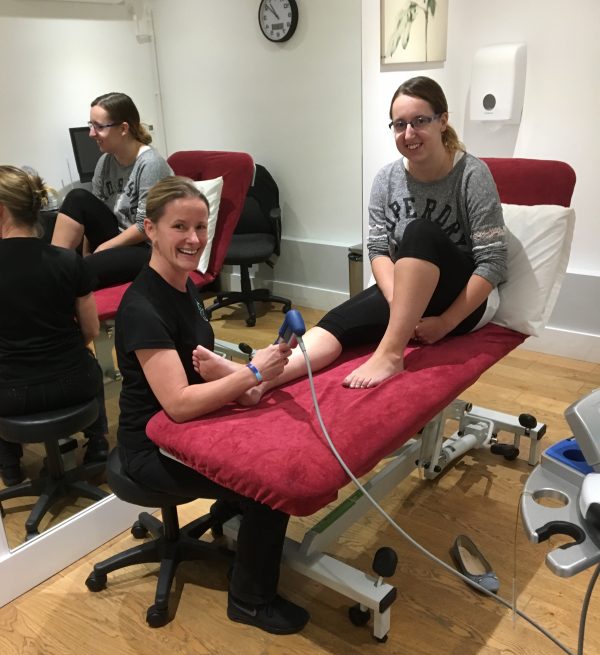
29 Jun Shockwave Therapy for Knee Arthritis: Can It Help You Move Better?
Knee pain from arthritis can make everyday things like walking, climbing stairs, or even standing up from a chair feel tough. If you’re looking for a treatment that doesn’t involve surgery or medication, shockwave therapy might be worth exploring.
Let’s break it down—what it is, how it works, and why more people (and professionals) are talking about it.
What Is Shockwave Therapy?
Shockwave therapy (also called ESWT – extracorporeal shockwave therapy) uses high-energy sound waves to treat pain and inflammation. Don’t worry—it’s non-invasive, which means no needles, no surgery, and no cutting. The machine sends pulses of energy into the painful area (in this case, your knee), helping your body heal itself naturally.
How Does It Help with Knee Arthritis?
Knee osteoarthritis (OA) happens when the cushioning (cartilage) in your knee wears down. That can lead to:
- Pain
- Swelling
- Stiffness
- Trouble walking or bending your knee
Shockwave therapy can help by:
- Reducing pain – It changes how your nerves send pain signals.
- Improving blood flow – More blood means better healing.
- Stimulating repair – It may help the body rebuild tiny bits of damaged tissue.
- Reducing inflammation – It lowers harmful chemicals that cause swelling.
What Does the Research Say?
New studies show very encouraging results:
- A recent summary of 14 clinical trials found that people with knee arthritis had less pain and better knee movement after shockwave therapy.
- People also reported being able to walk further and do daily activities more easily.
- The effects can last several months, especially when combined with exercises and physiotherapy.
- It’s safe—most people only feel a bit of soreness after treatment, like a workout.
What’s a Typical Treatment Like?
Here’s what to expect:
- Session time: About 20-30 minutes
- Number of sessions: Usually once a week for 3–5 weeks
- Pain level: Some discomfort during the pulses, but it’s usually well-tolerated
- Aftercare: You might feel sore for a day or two. Gentle movement is encouraged, but no heavy workouts.
You’ll often get exercises to do at home or in the clinic to get the best results.
Who Might Benefit the Most?
Shockwave therapy can be helpful for:
- People with mild to moderate knee arthritis (but sometimes even severe cases)
- Those who want to avoid injections or surgery
- People who’ve tried exercise or medication without much relief
- Anyone looking for a natural boost in healing
Are There Any Risks?
Serious side effects are rare. Some people feel:
- Soreness for 1–2 days
- Mild swelling or bruising
- A tingling sensation during treatment
You shouldn’t have shockwave therapy if you’re pregnant, have a blood clotting disorder, or have a metal implant near the area.
Final Thoughts
If knee arthritis is slowing you down, shockwave therapy might be a simple, non-invasive way to reduce your pain and improve your movement. When combined with the right exercises and advice from a physiotherapist, it can help you stay active, independent, and in control of your health.
Want to Know More?
If you’re wondering whether you’re a good candidate for shockwave therapy, speak with one of our physiotherapists or osteopaths.
We’re always here to help you move better, feel stronger, and live fully.


